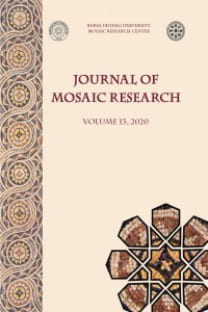Osroene bölgesi büyük ölçüde Edessa (Şanlıurfa) ile anılan, Karrhae (Harran), Birtha (Birecik), yerleşimlerini içine alan, batısından Euphrates’in (Fırat) aktığı bölgedir. Bölgede önemli bir güç olan Abgar sülalesi M.Ö. 132 yılında Seleukos idaresini sona erdirmiştir. Bu sülalenin oluşturduğu krallık idareyi M.S. 242’ye kadar sürdürmüştür. Krallık Dönemine tarihlenen mozaiklerde bir aileyi oluşturan bireylerin bir arada ve özenli bir şekilde işlenmesi aile huzurunun ve birlikteliğe verilen önemi vurgular. Aile reisi yanında yer alan bireyler içinde kadın, saygın pozisyonu ile dikkat çeker. Aile mozaikleri ölüm sonrasında da gerçek hayatta olduğu gibi bir arada olunacağını göstermektedir. Ölüm sonrası yeni bir hayata inanan bölge paganlarının mezarlarında çıkan bir adet Phoeniks mozaiği ve iki adet Orpheus mozaiği de bunu desteklemektedir.
Family, Death and Afterlife According to Mosaics of the Abgar Royal Period in the Region of Osroene
The region of Osroene is the area including Edessa (Şanlıurfa), Carrhae (Harran), and Birtha (Birecik) located east of the Euphrates (Fırat) River. The Abgar Dynasty, the major power in the region, overthrew Seleukos’s control and regained independence in the region in132 BCE. Family members depicted together and at ease in mosaics of the royal period symbolize the importance of peace within the family and family unity. Of the figures portrayed next to the genearch, the wife is the most striking individual with her dignified pose. Family mosaics indicate that whole family will be together after death as they were in life. A Phoenix and two Orpheus mosaics found in the region also support the pagan notion of a new life after death.
- ISSN: 1309-047X
- Başlangıç: 2008
- Yayıncı: Ululdağ Üniversitesi, Mozaik Araştırlmaları Merkezi
